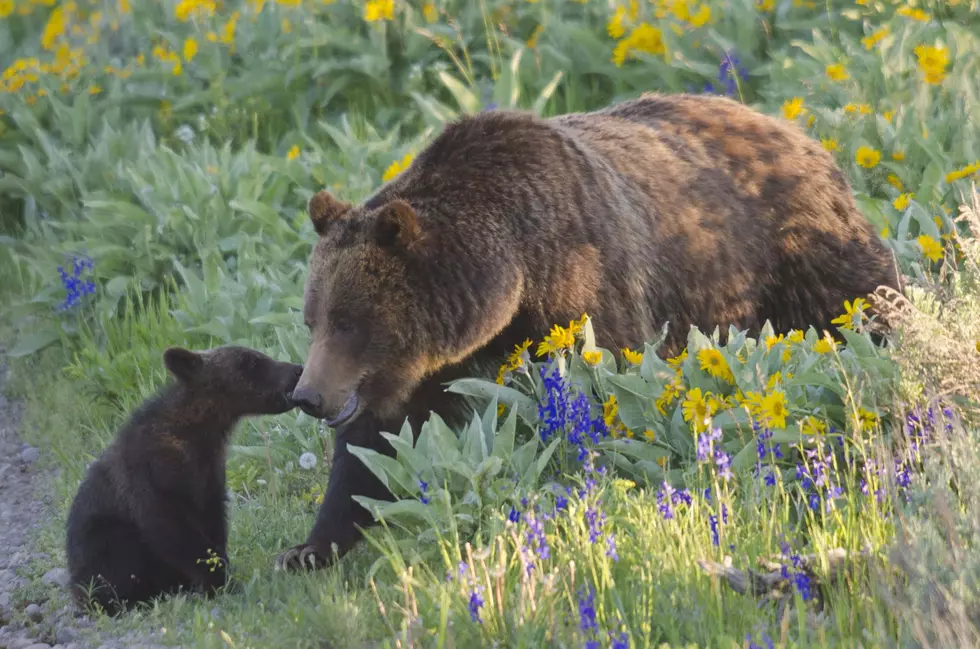
Montana signs tri-state agreement to manage Yellowstone griz
Laura Lundquist
(Missoula Current) With Montana’s approval of a tri-state agreement, the Greater Yellowstone population of grizzly bears could be one step closer to delisting.
On Thursday, the Fish and Wildlife Commission voted unanimously to approve a tri-state memorandum of agreement on how Yellowstone grizzlies would be managed if the subpopulation is delisted.
The state of Wyoming has petitioned the U.S. Fish and Wildlife Service to delist the Greater Yellowstone grizzly population. FWP Wildlife administrator Ken McDonald said the wildlife commissions of Wyoming and Idaho had already approved the memorandum.
“It does limit commission discretion to a degree for future management. But it also demonstrates regulatory commitments, which is one of the variables that the Fish and Wildlife Service considers when they're determining whether delisting is warranted or not warranted,” McDonald said.
Under the agreement - which is based on the Greater Yellowstone grizzly conservation strategy - the three states have to cooperate to keep the grizzly population within the Greater Yellowstone demographic monitoring area at 800 to 950 bears or more. The agreement doesn’t deal with bears outside of the demographic monitoring area or DMA, which is approximately 20,000 square miles.
After coming up with a grizzly population estimate within the DMA, the states will come up with a growth rate. A growth rate of 1 means essentially no change, so if the estimated population is higher, say around 1,000 bears, the growth rate can be slightly lower, which means more bears can die. The three states will monitor grizzly mortality.
After factoring in mortality from other causes, the states can calculate the remaining number of bears that can be hunted. Each state will be allotted a number of bears to be hunted based upon land area within the DMA. About a third of the DMA is in Montana, so FWP will be allotted one-third of the huntable bears.
Montana has put a moratorium on hunting for the first five years after delisting, but the other two states have not. But if the population falls below 800 bears, all hunting will be suspended and the states will conduct a biology and monitoring review to make changes to prevent future declines.
“We need to make sure the three states collectively are working together so no one state undermines the others or does something that will interfere with meeting these criteria,” McDonald said.
McDonald said the agreement also included a requirement for genetic augmentation, so FWP is starting to trap and transport at least two female grizzlies from the Northern Continental Divide Ecosystem to deposit in the Yellowstone area.
During public comment, a few people questioned whether three states with relatively different agendas would be able to cooperate.
Montana Wildlife Federation spokesman Jeff Lukas cited three problems with the agreement. First, it doesn’t take into account how the bears that die outside the DMA affect the population within the DMA. As bears migrate out, they could die but their deaths wouldn’t be counted. Then, there’s the problematic way that bear numbers are managed within the DMA. Finally, the agreement doesn’t encourage connectivity between grizzly populations in Montana that is needed for genetic health and long-term resiliency.
“Managing grizzly bear population decline post-delisting, as described in the conservation strategy that this tri-state (agreement) implements, is biologically unacceptable for the relatively small and isolated grizzly bear population in the Greater Yellowstone Ecosystem,” Lukas said.
Endangered Species Coalition spokesman Derek Goldman said having no language in the agreement to protect grizzlies outside the DMA is problematic because Montana, Idaho and Wyoming have recently instituted several regulations that more aggressively target carnivores, including wolves, lions and bears. Bear-baiting and hound hunting, which weren’t allowed in Montana prior to 2021, pose threats to grizzly bears.
For example, on June 10, a hunter in Idaho killed a grizzly bear that visited his black-bear bait site. The hunter had suspected it might be a grizzly and sent photos into Idaho Fish and Game. The biologists misidentified the bear as being a black bear and told the man he could shoot it.
“We think all this will result in increased mortality of grizzly bears, particularly those bears outside of the demographic monitoring area where anything can happen to bears,” Goldman said.
Goldman said Wyoming has already said it is considering tripling the number of grizzlies that it previously considered for a hunt in 2017 after Yellowstone grizzlies were delisted the first time. While Montana had no grizzly bear hunt planned and Idaho would allow one grizzly to be shot, Wyoming had planned for one female and up to nine males to be killed within the DMA and another dozen could be shot in the rest of the state. That was based on a mortality count of 20 dead females, but later, more dead bears were found, causing wildlife advocates to challenge the hunt quotas.
Representatives of the Ravalli County-based Montana Sportsmen for Fish and Wildlife and a new group, the Montana Conservation Society, supported the agreement.
